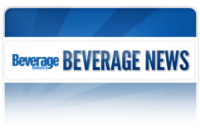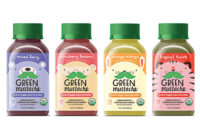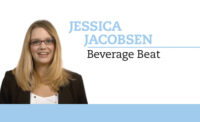Social media channels have allowed many of us to make connections that previously weren’t possible. For instance, my Swedish penpal from when I was in third and fourth grade found me on Facebook a few years ago, allowing us to make the international connection once again. Although the sections and aisles of a retail store aren’t as far apart as Sweden and the United States, some brand owners still need help connecting one product to the next.
In an insights post from New York-based Nielsen titled “Win-Win: How Finding Connections Across the Store Can Boost Sales,” the market research firm explains how desires for convenience, fresh foods and budget-friendly offerings have altered dynamics in retail. Historically, retailers and manufacturers have analyzed performance based on aisle or department, it notes. However, this isolated view is not how the average consumer looks at the store.
“The fact is, we’re all total store shoppers,” the market research firm wrote. “For example, the average shopper spends nearly 80 percent of his or her grocery dollars on center-store products. And even the most fresh-focused shoppers only spend around 30 percent of their grocery dollars on fresh [products]. Since shoppers use all of the aisles in the store to solve everyday needs, retailers and manufacturers need to better understand how shoppers connect the dots across aisles for meal solutions and everyday eating occasions.”
For example, price increases in one category could have a ripple effect on others, it notes. Being able to connect these categories offers a connection-based view to retailers and can allow them to strategize based on common benefits. Recognizing these connections also could help raise sales, Nielsen notes, and uses orange juice as an example.
“Orange juice — a consistent connector for breakfast — has a statistical association with sales in both preparation (cereal, eggs and breakfast sausage) and immediate consumption (fresh bagels, deli-prepared breakfast [items] and fresh doughnuts) breakfast categories,” Nielsen wrote. “Retailers can capitalize on orange juice’s role in filling consumers’ needs for both preparing breakfast and grabbing it on the go to drive total store gains for the meal occasion.”
Some beverage-makers have already embraced this mentality. In Beverage Industry’s February issue, St. Louis-based Anheuser-Busch (A-B), a division of AB InBev, discussed how it is putting a focus on enhancing the beer purchasing experience through its retail lab. For instance, its grocery lab features product displays that complement its brands outside of the traditional beer aisle. This includes merchandising certain brands near produce varietals or deli stations.
“We’ve made major improvements to our point-of-connection materials so they connect better with the shopper mission trips,” Greg McLeod, vice president of trade marketing for grocery at A-B, told Beverage Industry. “Retailers have more confidence than ever to merchandise Anheuser-Busch brands in locations outside of the beer aisle because our sales teams provide grocery-department-relevant programs with merchandising support where legal.”
As beverage-makers get more sophisticated in their retail analytics, it will be exciting to see what merchandising displays they will have in store for us.




